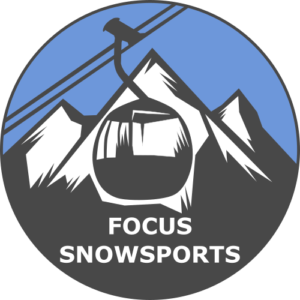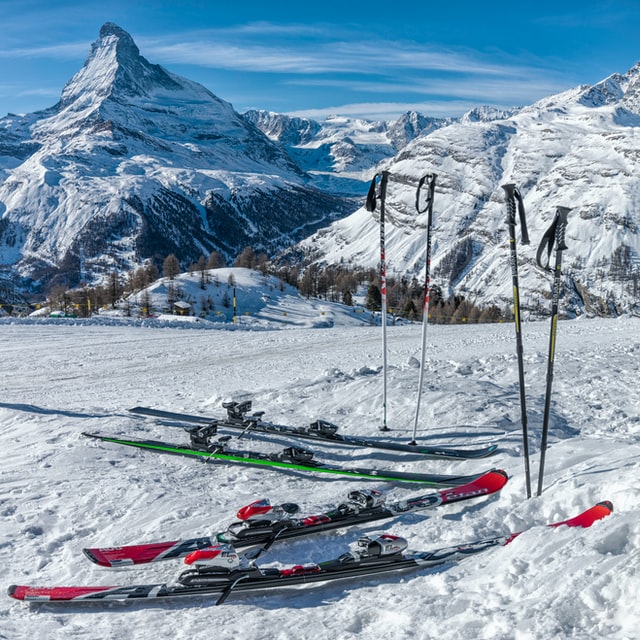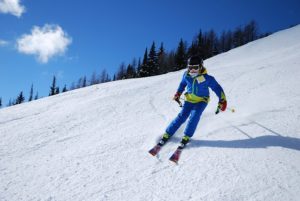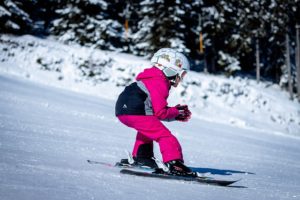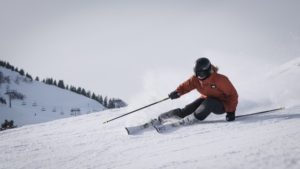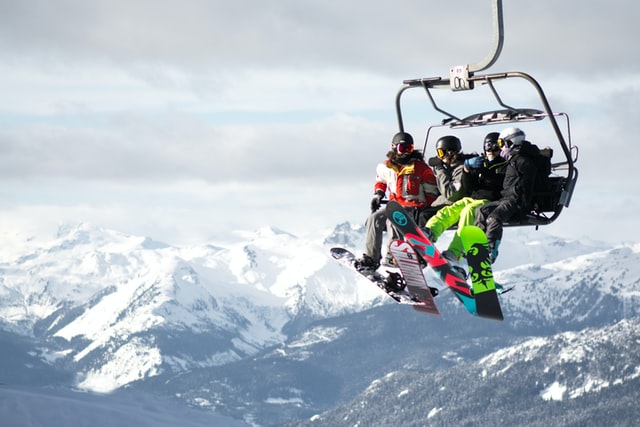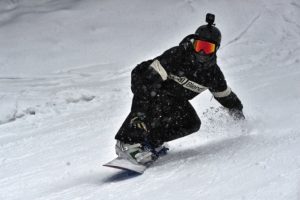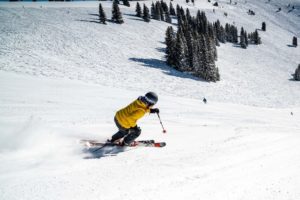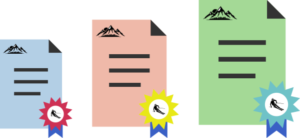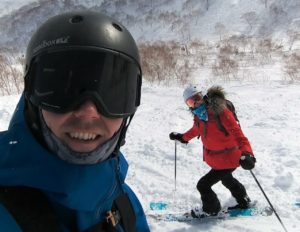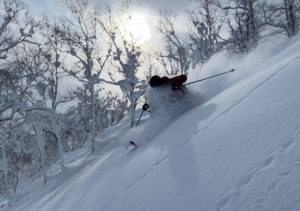To be a ski or snowboard instructor, you’ll likely be taking an instructor exam at some point. Once you pass this test, you’ll be a qualified snowsports instructor and able to work in many countries around the world. Getting into teaching skiing or snowboarding happens in stages, referred to as levels. This way you can gain an entry level qualification, and then work your way up from there. For more info on that, see our post, A Simple Guide to Snowsports Instructor Qualifications
Ski and snowboard instructor exams are broken down into a two main elements, technical and teaching ability. In these, you’ll need to demonstrate that you can ride to a certain level, have a good understanding of how to teach and present information well.
Instructor Exam – Technical (Skiing/Snowboarding)
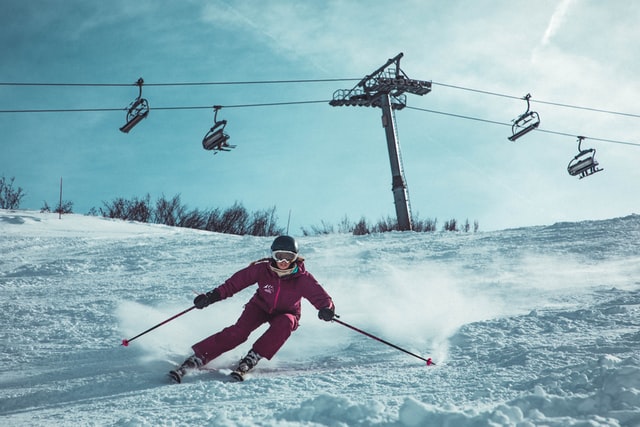
The technical side of the instructor exam is your skiing or snowboarding skills and demonstrations. You’ll be given tasks such as “show us short turns on a red run”. Then you’ll be graded on how well you did based on a pre determined standard. The standard might be an intermediate level performance and you’ll be given a clear demonstration of what that is before it’s your turn. You’ll need to demonstrate this standard as a minimum, but you can certainly show more advanced moves if you are capable of them.
For a demonstration, or demos as they have become known, they’ll be more specific in what you must show. After all, this is to test how well you can show something to a student, so it must be done well. A demo might be, “show us a beginner snowplough turn on a green slope”. For a demo, you’ll need to do it as if you’re teaching a class. So it needs to match their ability level and what they would be capable of achieving. You’ll be graded based on how well you demonstrated the movements needed to show a guest what you’d like them to do.
How to Pass a Ski (or Snowboard) Instructor Exam
Instructor Exam – Teaching
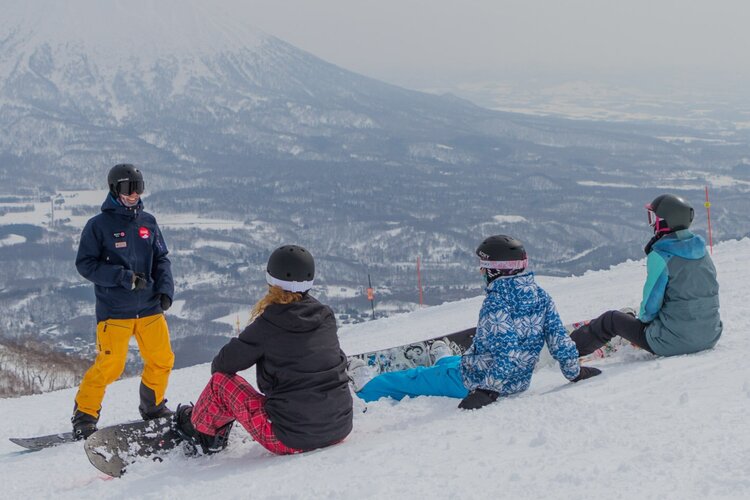
Teaching covers your ability to present information to your students, detect faults, correct them and give appropriate skill exercises for improvement. Often teaching exams will give you a scenario for your ski or snowboard lesson. It could be “adults who have never skied before” or “children who can slide and stop”. The other people on your instructor exam will take the place as the “students”. You’ll teach them as if they are the people in the scenario. Exam lessons are usually much shorter than real life lessons. They’ll give you enough time to demonstrate how you would teach that specific lesson. You’ll be graded on a set criteria and how well you did in each. A good example of what you should do in a teaching exam is the APSI’s nine lesson essentials:
- Introduction
- Identifying students and their goals
- Planning the lesson
- Presenting the lesson
- Demonstrating
- Practicing
- Movement analysis
- Feedback and correction
- Lesson summary
The Best Ski Instructor Equipment for Training
What Happens on Exam Day?
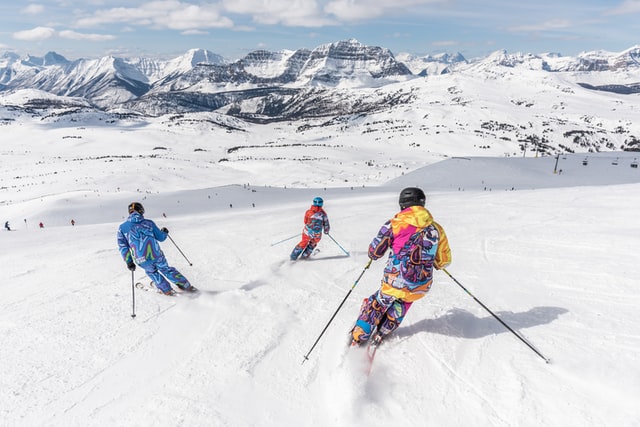
This depends on two things, which which level you’re at and which instructor qualification system that you’re in. LINK. For a level one instructor exam, you’ll generally be given at least a couple of days training as part of the exam process. Most of the instructor qualification systems will continually assess you over these days, so there is less pressure on you to perform a skill on the spot. As you progress up to higher snowsports certification levels, exams will become formalised. Candidates will wait their turn to ski down a specific run while examiners watch and note their score.
The teaching element is a little different however. You’ll be given your scenario and asked to teach a mock lesson to the other people in your exam group. This will be a very basic and short lesson (around 5-20 minutes) at the level one. Everyone on the lesson will also be acting as if they are the ability level of the scenario, for example, first time skiers.
For higher levels, the exam lesson may be up to 60 minutes. It will also be more realistic with everyone skiing at their actual level. No matter what level exam you’re taking, you’ll need to show all the essentials above that create a good quality lesson.
Am I Good Enough to be a Ski Instructor?
What If I Don’t Pass?
After your ski or snowboard instructor exam, you’ll get your results and some feedback. Hopefully you passed both the technical and teaching elements, along with any additional ones if you’re doing higher level exams. If you passed some elements but not others, it’s not a problem, you can often just re-sit those specific parts. As you progress further up the instructor levels, it’s more likely that you might only pass some elements at one time. This is totally normal and simply allows you to focus on any areas of weakness. It’s common for skiers and snowboarders working on their level three and four qualifications to take multiple exams and pass some elements each time until they complete all of them.
Final Thoughts
Teaching skiing or snowboarding is one of the most rewarding and memorable experiences that you can have. You’ll need to be open to learning new things and challenging yourself, especially when it comes to getting qualified as a ski or snowboard instructor. But, as you can see above, snowsports instructor exams are designed to be straightforward and clear in what’s expected to get a pass. For more info on becoming a ski instructor, see our full guide How to Become a Ski Instructor.
